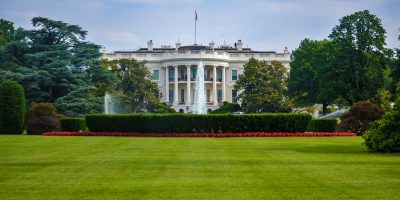White House Tour: Interior
In 1791, the first representative, George Washington, chose the location for the White House. In 1792, the construction started, and Irish-born builder James Hoban proposed the winning proposal. In 1800, President John Adams and his companion, Abigail, settled into the incomplete house after eight renovation years. The British burned down the President’s House in 1814 after the Battle of 1812. President James Monroe lived in the building in 1817 after President James Hoban was chosen to restore it. The South Portico was built in 1824 under Monroe’s supervision, and Andrew Jackson supervised the installation of the North Portico in 1829. Various attempts to enlarge the President’s House significantly or construct an altogether new house for the President were introduced in the late nineteenth century, but these designs were never realized.
White House: A Historical Building
The White House displayed considerable systemic deterioration symptoms around 50 years since Roosevelt’s reconstruction. All except the exterior walls were removed as part of President Harry S. Truman’s restoration of the house. Architect Lorenzo Winslow oversaw the renovation, and in 1952 the Truman family returned to the White House. The White House has been home to every President since John Adams, and the building’s past stretches well past its completion. The White House is also the President of the USA and a museum of American history, from the First Floor Corridor quarters, which were converted from their early usage as an area for services, to the Government Floor places, where numerous politicians and diplomats have been welcomed. The White House is a building where history is still being made.
The Colossal Structure of the White House
The vast structure is divided into three parts: the East Wing, the West Wing, and in the centre is the Executive Residence. Two colonnades run between them. The six-story Executive Residence complex is the biggest among them. It includes two underground levels, a bottom floor where building employees serve, a government floor for functions and gatherings, and two floors where the President’s family stays and resides. The President holds formal receptions in the oval-shaped Blue Room on the state floor. It has been the same colour since 1837, with blue upholstery, blue curtains, and blue carpet.
White House Facts Regarding Interior and Exterior
· The Residence has 132 quarters or separate rooms, 35 toilets, and six floors.
· The building contains 412 doors. Around 147 windows and 28 fireplaces are installed to accommodate ventilation and balance weather conditions.
· There are eight staircases and three elevators to move around the building
· The White House was being referred to as the “President’s Palace,” the “President’s House,” or the “Executive Mansion” at numerous periods in time. In 1901, President Theodore Roosevelt granted the White House its present name.
· President James Polk (1845-1849) was the first Leader to have a snapshot captured of him while in government. President Theodore Roosevelt (1901-09) was the first president to drive in a car and venture outside the nation while he toured Panama. President Franklin D. Roosevelt (1933-45) was the first person to travel by air.
· The White House kitchen will offer a meal to up to 140 people and appetizers to over 1,000 people.
· To complete the outside of the White House, 570 buckets of paint are needed.
· It has its library named the Indian Treaty Room. The reading material was shelved in alcoves on multiple categories parallel to the main reading area. The room did not represent a library in the traditional sense. Around 1918 and 1921, the Navy Department abandoned the site, with the library being the last to evacuate in 1923. From 1950 to 1961, the Indian Treaty Room was also used for presidential press conferences and well-equipped with the bookshelf speakers and bookshelf speaker stands.
Blue, Red and Green Rooms
The President holds formal receptions in the oblong Blue Room on the government floor. It has been the same colour since 1837, with blue furniture, blue shades, and a blue rug. Two parlours for entertainment are located to the left and right of the Blue Room. The Red Space, with its bright red walls, is one of them. The Green Room is the other parlour, which has green walls. The first family’s official living space is the Yellow Oblong Room, situated just above the Blue Room.
The Bowling Alley
There are many rooms for entertainment in the house. An exclusive bowling alley can be found under the North Portico in the basement of the Executive Residence. The alley is only one lane and is used by dignitaries and presidents. This one-lane alley is digitally equipped with huge-sized LEDs and speakers.
The Cinema Room
The East Archway has a cinema room that stretches nearly the whole length of the building. Presidents and their friends have access to whatever film they choose, at any period of the day, well when it is not even released in theatres. It has built-in speakers and projectors for further enhancements. Many presidential families do not enjoy this luxury in other countries.
The Situation Room
The Situation Room, a 5,000 square-foot facility in the underground, is where the President provides information and crisis assistance. The National Security Council is in charge of it.
The Naval Restaurant
The Navy Messing and Ward Room, a restaurant run by the US Navy, is located a few rooms down. Official meals, like dinner parties, are held in the State Dining Room, which is separate from the Navy Messing and Ward Room. It can seat up to 140 people. In any way, these restaurants and dining halls are on par with every five-star establishment.
The James S. Brady Press Briefing Room
The James S. Brady Press Conferences Space, where the White House national media coordinator provides updates to the news media, is one of the most photographed areas in the West Wing. We often see coverage on TV in this room. Many diplomats and dignitaries often give media briefings in this room.

